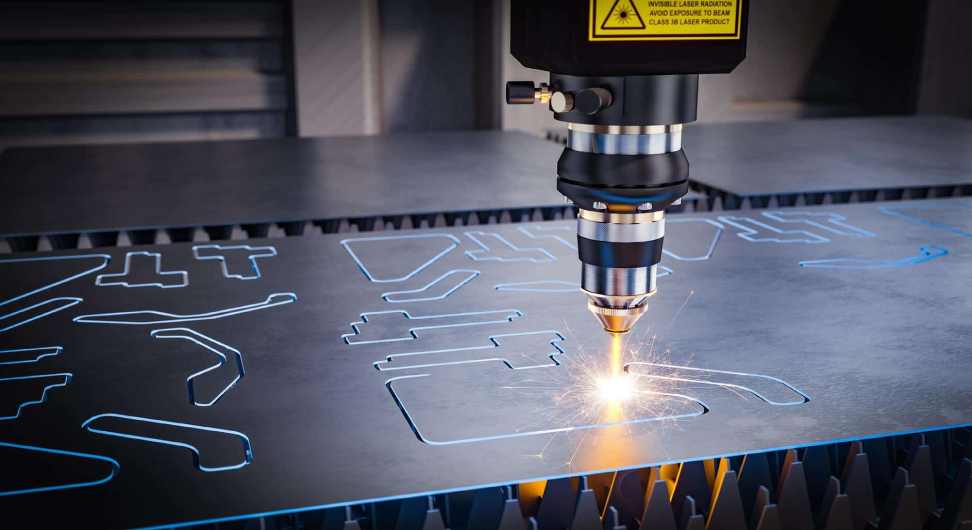Laser cutting isn’t just for dazzling light shows and sci-fi movies. It’s a powerful technology revolutionizing various industries, from manufacturing to crafting. This article delves into the world of laser cutting, exploring its core principles, the diverse materials it can handle, and its impactful applications across various sectors.
Precision Personified: How Laser Cutting Works
Imagine a tool that uses a concentrated beam of light to cut through materials with incredible precision. That’s the magic of laser cutting . Here’s a breakdown of the basic process:
- The Laser Source: A high-powered laser beam is generated, typically using carbon dioxide (CO2) or fiber lasers.
- Beam Delivery: The laser beam is directed through mirrors and lenses to focus it on the material being cut.
- Material Interaction: The intense heat from the focused laser beam melts or vaporizes the material, creating a clean and precise cut edge.
- Computer Control: The entire process is a simple computer-controlled process, also allowing you for intricate designs and precise cutting patterns.
This combination of laser technology and computer control unlocks a world of possibilities, making laser cutting a highly versatile and precise cutting solution.
Beyond the Obvious: Materials Conquered by Laser Cutting
While metals are often the first to come to mind, laser cutting can handle a surprisingly wide range of materials:
- Metals: From thin sheet metal to thicker plates, laser cutting can precisely cut steel, aluminum, stainless steel, and even more exotic alloys. This makes it ideal for applications like metal roof replacements, where precise cuts are needed for custom flashing or panels.
- Plastics: Acrylic, ABS, and other plastics can be laser-cut to create signage, prototypes, and various industrial components.
- Wood: Laser cutting can create intricate designs and patterns in wood, perfect for crafting, furniture making, and architectural models.
- Fabric and Textiles: Laser cutting can be used for delicate fabric cutting in the fashion industry and for creating precise stencils or patterns in various textiles.
The list goes on – the versatility of laser cutting is truly impressive.
Shaping the Future: Applications of Laser Cutting Across Industries
Laser cutting has found applications in a multitude of industries, transforming manufacturing processes and design possibilities:
- Aerospace and Automotive: Laser cutting is used to create lightweight and high-precision components for airplanes, cars, and other vehicles.
- Electronics: Intricate circuit boards and electronic components rely on the precise cuts of laser cutting .
- Medical Devices: From delicate surgical instruments to intricate stents, laser cutting plays a crucial role in the medical field.
- Consumer Goods: From customized phone cases to intricate jewelry designs, laser cutting adds a touch of personalization and precision to everyday products.
A Sustainable Edge: Laser cutting offers a clean and efficient cutting process, minimizing material waste compared to traditional methods. This makes it an attractive option for environmentally conscious manufacturers and designers.
Conclusion: Beyond the Beam, a World of Possibilities
Laser cutting is more than just a cutting-edge technology; it’s a catalyst for innovation and precision across various industries. From the intricate details of metal roof replacements to the delicate cuts in medical devices, laser cutting is shaping the future of manufacturing and design. As this technology continues to evolve, we can expect even more creative and impactful applications to emerge, pushing the boundaries of what’s possible. So, the next time you see a laser cutting machine in action, remember – it’s not just a dazzling display of light; it’s a glimpse into the future of how we create and shape the world around us.
Feature image source:- https://tinyurl.com/3bucpfxs


I appreciate your efforts which you have put into this article. This post provides a good idea about Laser Cutting Services Genuinely, it is a useful article to increase our knowledge. Thanks for sharing such articles here.
Your comment is awaiting moderation.